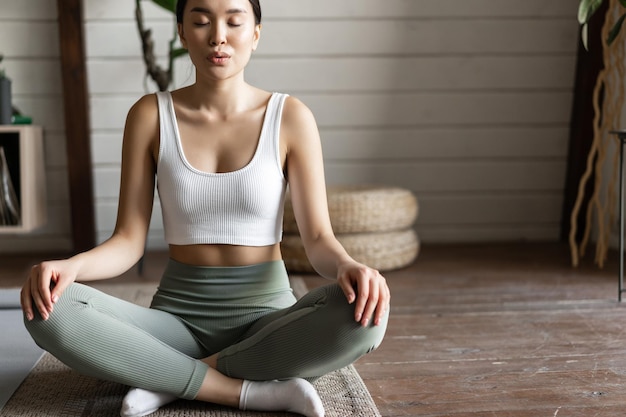
Practicing yoga isn’t just about being flexible; it has significant benefits for memory, heart, and bone health, according to Anna Magee.
People in the UK are now obsessed with yoga, spending a whopping £790 million each year on classes and mats. While some yoga trends have become quite unusual, like rage yoga or dog yoga, the proven benefits are undeniable and increasingly backed by science. For instance, UCLA researchers found that a three-month course of yoga and meditation was more effective than traditional memory exercises in reducing age-related brain impairment. Another study discovered that yoga improved sleep in breast cancer survivors.
Lucy Edge, a 53-year-old former advertising executive, turned to yoga while battling depression. She took a six-month career break, traveled to India to learn yoga, and returned feeling happier and more content. Lucy has since written three books on yoga and created Yoga Meds, a section on her website listing over 300 clinical trials highlighting yoga’s benefits for various conditions, including arthritis and obesity.
Here are some ways yoga can enhance your health and how to get started with it:
1. Memory Improvement:
If you’ve been relying on crossword puzzles or Sudoku to keep your mind sharp, it might be time to try yoga. UCLA research involving adults over 55 showed that 12 weeks of yoga and meditation led to better spatial and visual memory improvements, reduced depression and anxiety, and increased resilience to stress compared to traditional memory exercises. Even one hour of Kundalini yoga per week, which includes breathing techniques, meditation, and chanting, along with 20 minutes daily of Kirtan Kriya meditation, showed significant benefits.
2. Heart Health:
While we often hear about walking or jogging for heart health, yoga can be equally beneficial. A systematic review published in the European Journal of Preventative Cardiology in 2014 found that yoga could reduce heart disease risk as effectively as conventional exercises. Yoga reduces stress, which is a significant contributor to heart disease, by lowering both blood pressure and heart rate.
3. Bone Density and Incontinence:
Yoga not only targets muscles, including the pelvic floor, but it is also a weight-bearing exercise, which helps increase bone density. It can be adapted to suit all fitness levels, making it accessible for everyone.
If you’re a beginner, it’s essential to inform your instructor about any health issues. Choosing a gentle style such as Hatha or Iyengar yoga can be more suitable initially.
Good quality yoga props, like a thicker mat to protect your joints, can enhance your practice. Also, consider factors like where you’ll store the mat and how often you need to carry it. A durable, eco-friendly option like the Elephant Cork Yoga mat from Valka Yoga, which is made from organic cork and natural rubber, can be a great investment. It’s antimicrobial and odor-resistant, with a design that won’t look out of place in your home.
Yoga blocks, especially those made of cork, can help you get into more challenging poses by providing extra support and stability.
Whether you’re flexible or not, yoga can benefit everyone. Here are some styles you might consider:
– Yin or Restorative Yoga: Gentle classes often held under candlelight with the support of blankets and bolsters.
– Vinyasa Flow: Energetic classes that link postures with breath in a flowing sequence.
– Iyengar Yoga: Focuses on alignment and precision, using props to help you get into poses.
– Anusara Yoga: Combines alignment with flowing movements, often set to upbeat music.
– Yoga Therapy: Specialized yoga practiced by teachers trained to help heal injuries or illnesses.
No matter your level of experience, there’s a yoga style out there that can help improve your physical and mental well-being.

